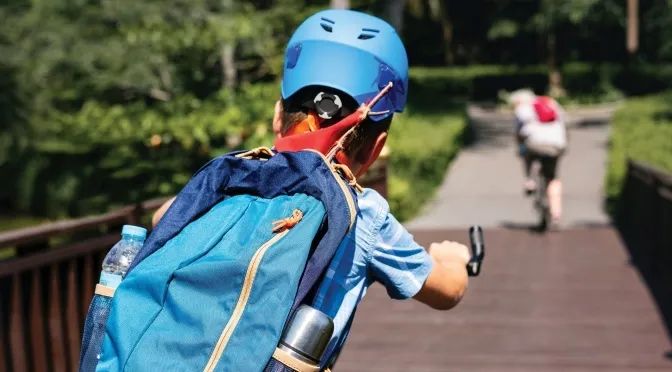
Trauma Nurse Talks Helmets
May 1, 2019 | by andrew goss, billings clinic
The warm summer months are a time to enjoy the outdoors as a family and experience everything our great state has to offer. Unfortunately for me, a trauma nurse, as the mercury climbs so does the number of patients I see for injuries. Just under half of the trauma patients seen at Billings Clinic for 2018 came in the months of May to August. Preventable injury is a bigger problem than most people realize. According to the Centers for Disease Control and Prevention (CDC), preventable injury is the leading cause of death for everyone ages 1-44 years old and our state data backs that up. The key word is preventable. Many injuries can be mitigated or avoided altogether by taking a few steps to keep your sunny days fun instead of tragic.
One of the biggest ways you can keep yourself and your family safe is to wear a helmet for activities that are prone to head injury. This suggestion doesn’t get as many eye rolls as it used to, but it still gets me labeled a helicopter parent occasionally. I grew up in the '80s and '90s, and we wear our relaxed attitude about safety like a badge of honor. We even have Internet memes about how tough we were not wearing helmets, riding in the back of pickups, jumping our big wheels off ramps, and surviving. Don't get me wrong I have fond memories of growing up riding my bike and jumping it off curbs. I even have a couple of scars to go with those memories, but for many kids, these same activities have ended sadly with death or lifelong injury from a traumatic brain injury (TBI). In fact, in 1980, bicycle-related TBI death was 20% higher (86% higher if you look at only 20-year-olds and younger!). The biggest reason for the decline: Increased helmet use. Still, only 1 in 4 riders wears a helmet making it no surprise that TBI still accounts for 70% of bicycle fatalities and half of all bike-related hospitalizations.
Thankfully biking and skating helmet use has gone up, but a helmet is essential for many other activities. Horseback riding is one activity that has been slower to adopt helmet use, but with 12,000 riders visiting emergency rooms last year with head injuries, wearing a helmet is essential. Whether you are a skilled rider or a novice, your horse still has a mind of its own and can spook or step in a hole sending the rider to the ground. That distance to the ground is considerably more than on a bike and independent from speed. That means it doesn’t matter if you “only go slow” you still fall just as fast and with more than enough force to cause an injury.
ATV side by side users should wear a helmet as they account for around 27,000 emergency room visits a year for head injury, 11,000 of whom were 12 years and under.
Those are a lot of numbers, some of which are pretty scary, more so because every number represents real children and families just like yours. Let me give share a couple more numbers that offer a lot of hope. When worn correctly, bike helmets are 88% effective at mitigating brain injury, ATV helmets are 64% effective, and horseback riding helmets are 80% effective at preventing or reducing brain injury.
So what can you do to keep you and your family from becoming one of these statistics?
Get a helmet: It doesn't have to be expensive. You can get a bike helmet for as low as $8 at Billings Clinic, and there are many safety events throughout the year where low-cost helmets are available. Just make sure it has been tested for the activity you wish to use it for. It should have a label inside that states it meets the American Standard of Trade and Manufacturing (ASTM) for that activity.
Make sure you wear it: Let your kids help pick it out, put stickers on it, or whatever helps them get excited to put it on. Also, you need to wear one too. Research shows that kids will keep wearing helmets when they see it role modeled by a parent or caregiver.
Know when to get a new one: If the foam of the helmet is starting to crack, it no longer fits, or if it has been in a wreck it’s time to get a new one. There can be damage to the interior of the foam that you can’t see that decreases its ability to protect the wearer. Always remember: one crash and it’s trash.
Stick with these tips, and hopefully, I will see you enjoying the outdoors and not as one of my trauma patients.
For low-cost helmets, reach out to me at the Billings Clinic Trauma Center at 435-1568 or email at agoss@billingsclinic.org
Originally printed in the May 2019 issue of Simply Family Magazine
Never miss an issue, check out SFM's digital editions here!





